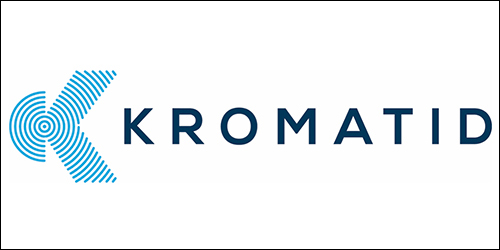18 Sep KROMATID Raises $8 million Series C to Fuel Expansion of the Company’s Proprietary Platforms for Detecting Chromosomal Structural Rearrangements
As expectations around cell and gene therapy safety and manufacturing rigor rise, KROMATID is carving a unique role with its single-cell structural analysis platform. While many labs offer broad services, KROMATID focuses on high-resolution visualization of structural variants that can make or break IND and BLA filings. Its proprietary dGH-based KROMASURE™ Platform provides the orthogonal, single-cell evidence that regulators now demand for genomic integrity and process consistency. In this Bench2Bedside conversation, we speak with KROMATID’s CEO, Jim Chomas, to explore how its recently announced $8 million Series C financing is accelerating global reach, AI automation, and expanded CMC support.
Bench2Bedside:
Tell our readers a bit about KROMATID and your focus on next-generation genomic structural analysis solutions for gene and cell therapy developers. How does this set you apart from other CROs and labs serving the cell and gene therapy space?
Jim Chomas:
What sets KROMATID apart is our singular focus on single-cell structural analysis with the highest resolution data, which is essential for cell and gene therapy developers. Unlike approaches that provide only averaged data, our platform delivers direct visualization of genomic events in individual cells, capturing the rare but clinically meaningful structural variants that can otherwise be missed. While cytogenetics has long been used in diagnostics, the throughput and sensitivity needs in cell and gene therapy are far higher due to the need for detecting rare and high-risk events. These therapies often begin in salvage settings and are now moving into earlier-line treatments. In this context, being able to track genomic changes at the single-cell level isn’t just an advantage – it’s essential for ensuring product safety and regulatory confidence.
Bench2Bedside:
You recently announced the close of an $8 million Series C financing. Congratulations! How are you planning to deploy this capital to expand your technology and support more CMC teams?
Jim Chomas:
Thank you – we’re very excited about this milestone. The capital is being deployed to scale our commercial presence, deepen our investment in AI automation, and broaden our global footprint, with a particular focus on expanding into the EU and other international markets. This investment ensures we can meet CMC and research development teams where they are, with the capacity, speed, and innovation they need to accelerate safe and consistent cell and gene therapy development.
Bench2Bedside:
Could you describe the key challenges CMC teams face in demonstrating genomic stability, manufacturing consistency, and risk mitigation for engineered cell products?
Jim Chomas:
CMC teams face significant challenges in validating genomic stability in their engineered cell products. One of the biggest risks today is waiting too long to assess genomic integrity, only to uncover instability issues during manufacturing, when it’s costly and difficult to resolve. To mitigate this, developers need to adopt single-cell, direct visualization methods earlier in development to detect rare structural variants before they propagate through scale-up. Recent FDA guidance reinforces this expectation, and companies that fail to integrate high-resolution genomic integrity testing into their CMC workflows may face compounded risks in regulatory review, batch release, and ultimately patient safety.
Bench2Bedside:
Please walk us through how KROMATID’s directional Genomic Hybridization (KROMASURE) platform detects structural variants such as translocations, inversions, and random vector integrations at the single-cell level.
Jim Chomas:
Our proprietary platform (KROMASURE) advances traditional FISH technology using single-cell, strand-specific probes that bind DNA in a defined orientation, which allows us to see structural variants down to 1.5 kb. Our platform allows us to provide whole-genomic analysis or to interrogate specific regions with much greater resolution than traditionally available methods. The proprietary KROMASURE platform can assist with testing in starting material analysis, edit integrity, batch release, and transgene integrations. Single-cell analysis using dGH methodology provides direct visualization, which can be beneficial in detecting rare translocations and inversions that other methodologies (such as NGS) lack the sensitivity to detect.
Bench2Bedside:
What milestones are you hoping to achieve over the next 12 to 24 months as you build on your role as a partner for genomic clarity in cell and gene therapy development?
Jim Chomas:
Over the next 12 to 24 months, our focus is to become the foundational quality partner to the cell and gene therapy industry. We will continue supporting a growing number of IND filings, publish peer-reviewed articles with leading academic programs and advance clinical programs through GLP and GMP studies.
Our mission is to advance therapies that will lead to better, safer treatments for those who need them most.

CEO: Jim Chomas
Headquarters: Longmont, CO
Lead Product: The KROMASURE™ Platform – single-cell structural genomic analysis tailored for cell and gene therapy companies



